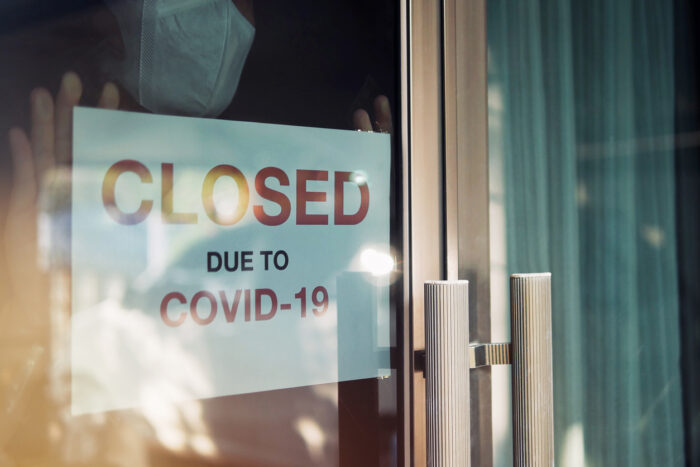The Secret Secretary: Managing during the pandemic
An anonymous golf club manager talks about his perception of golf club management during the pandemic.
A recent issue of The Golf Business, and profile of a golf club I know very well, illustrates how the different camps view golf. Each one thinks that their way is the right way. If one is looking for a sustainable model that grows golf and doesn’t risk going bust (as I am for my club), you don’t follow the club that was profiled.
The manager said he finds the club friendly and inclusive while upholding the core traditions of golf. Yet I’m afraid I would say I try for my club to be exactly the opposite to this one.
The manager recommends spending more on their clubhouse – I would say a golf club doesn’t need a clubhouse, but it does need a course.
A few years ago a club in Lancashire was deep in the red. They sold their clubhouse to a developer and replaced it with portacabins. Immediately they went into the black with money in the bank, and their overheads dropped dramatically. Their fees dropped and the atmosphere changed to a happier, more relaxed style, and people started to join.

This is a boom time for golf, yet some clubs are still closing. Despite all the Covid closures, our income has nearly doubled in the last year and we now have a huge waiting list. The clubs that are closing are often local authority run where they dare not skimp on clubhouse repair costs, so the golf suffers. This is so short sighted when golf is booming. If you cannot make money from golf now you are doing something very wrong.
I believe the golf industry is now probably split into the following models:
Five percent are historic private members’ clubs, usually on the right soil so cheap to maintain and will always have customers so can ask whatever price they want. Governed by following the same routine for the last 200 years and a variety of atmospheres: they can’t go wrong even with gross mismanagement.
Thirty percent are posh private members’ clubs that think they are of historic value. These are the ones that the BBC loves to bash to give golf a bad name. They’re also often on good soil so can be easy and cheap to maintain, often run by the wealthy and socially aspiring but on an almost Communist system of management so grossly inefficient and hence expensive. Those frustrated by a lack of golf skill develop grand clubhouses that price youngsters out. Dress codes, interviews and complex rules. People who ‘do’ golf rather than ‘play golf’: poaching good players by offering cut price membership.
Twenty percent are village private members’ clubs on a variety of soils – there to serve the people of the area. A more efficient, yet still socialist, system of governance so not very cost efficient; however more aware of members’ needs and budgets, and many volunteers keep costs within budget. They fight tooth and nail and keep alive so encourage growth, including the juniors and ladies. Still burdened by committee rules though.
Three percent are local authority municipal courses. A variety of soils maintained by parkkeepers, so often presented badly and unable to charge a realistic green fee. These standards were acceptable in the 1970s but not now. They could so easily be a big success but the poor distant and inappropriate management makes them prime targets for closure and development. Urgent resuscitation is needed.

Twelve percent are owner-operator proprietary clubs – usually on cheap, unsuitable land so relatively expensive to maintain. They’re often run by benign dictators who must survive at all costs. They often succeed and are growing golf against all the odds. They find few rules or dress codes are a major source of growth for golf.
Fifteen percent are hotels and chains, featuring large, proprietary clubs with unsuitable soil but in good locations. They have a large budget so are able to charge moderate fees and run the golf side at a loss. Usually no dress codes and minimal rules.
Twelve percent are par threes or driving ranges or alternative forms of golf such as adventure golf. They’re often on totally unsuitable soil but are in top locations and attract the real grass roots. Usually cheap and very profitable – the very best recruiter of new golfers.
Three percent are ‘independent’ golf courses with an absent owner rented out to whoever will have it. They’re very unstable and unaffiliated to any body, so lacking the guidance that comes from being associated with a wider golfing body. They tend to have a wide variety of quality and are not very expensive. Maverick, frequently changing, dictatorship governance with often either no rules or unique rules: taking money is the aim above all. Clientele often includes those excluded at other courses for misbehaviour or non-payment.
At the end of 2020 I played in a society at one of these ‘independent courses’. This course had no Covid signs up, the clubhouse was open and serving anything you wanted, with no masks on view. They were starting from two tees with eight minute starting times and after the first hour and a half there were queues at both the 10th and 1st: effectively now four minute gaps between groups. Three and fourballs were sharing buggies and the ‘rangers’ were pushing people together in the queues to accommodate the numbers!
After this I returned to my club on the way home in time to receive a phone call from a neighbour. Two of our juniors had just completed 18 holes together and paused briefly to chat to another single junior practising on the putting green. Shortly after, we received a phone call from one of their mothers complaining that she could see our juniors were not socially distancing.

The receptionist said he felt like telling her we would ban them from the course and send them into the hands of the drug dealers. Maybe that would make her happier.
I did phone the manager of the rogue course the next day and told him his irresponsible actions would get us all closed (this was just before Boris closed us all down anyway). He said he was under great pressure from all the people who wanted to play and felt obliged to fit in as many as he could.
The opinions expressed in this column are those of the authors, not The Golf Business. The authors change from article to article, but so far have only been golf club managers or golf club owners.















Let me tell You a sad story ! There are no comments yet, but You can be first one to comment this article.
Write a comment